All this month, we’ll be helping Children’s Hospital Los Angeles‘ Make March Matter campaign, which aims to raise over a million dollars in March alone for CHLA through the efforts of its corporate partners, among which we are proud to be numbered. Children’s Hospital Los Angeles sees over 528,000 patient visits annually, and is the top ranked pediatric hospital in California by US News & World Report. You can help Make March Matter by simply attending one of the many events or participating in one of the many initiatives being offered by CHLA’s partners (including our event on Saturday, March 25), all listed at www.makemarchmatter.org.
To help remind us all to Make March Matter to support children’s health, we’ve asked all our contributors here at the website to focus on books and comics for kids, or the books or comics that meant the most to them as kids, because we firmly believe that escaping into literature is just as important in keeping children healthy and happy.
Today’s tale of long-lost comic strips finally discovered is from comics historian and editor Rich Handley:
Every comic-book enthusiast has an elusive Holy Grail or two—something rare, expensive, and difficult to find that he or she hopes someday to add to the collection. Until recently, mine involved a starship on a five-year mission and a tyranny-fleeing ragtag fugitive fleet, but I’m amazed to say I finally found both in 2016, and the child in me is positively giddy.
I’ve been collecting Star Trek and Battlestar Galactica comics ever since I was a teen, and have in my collection every single issue of both franchises, going back to 1967 for Trek (see the complete list) and 1979 for BSG (here’s that list) —look, I make lists… don’t judge me). For decades, I scoured comic shops, flea markets, and later websites, relishing the hunt as I filled in all remaining gaps until, at last, I foolishly—arrogantly—let myself think I had every licensed Galactica and Trek story ever told in a comic book or strip.
So you can imagine my stunned surprise when my friend Mark Martinez, the proprietor of the Star Trek Comics Checklist and my equal when it comes to obsessive-compulsive collecting, alerted me to an eBay auction for a number of vintage Star Trek collectibles, including an unusual comic strip of which neither he nor I had any knowledge. My eyebrow shot up so far, Spock would have experienced uncharacteristic pride. The hunt was on once more!
Judicious research eventually turned up the strip’s identity. It was the Star Trek Space Viewer, a so-called “rack toy” produced by Larami back in 1979.
Larami’s Trek line, which included a wide variety of cheaply made, discardable plastic items for children—guns, wallets, puzzles, bubble machines, sunglasses, that sort of thing—were generally sold on store racks for 39 to 99 cents apiece, delighting children and annoying parents everywhere. According to Brian Heiler’s PlaidStallions website:
“These low-cost toys were produced mainly by companies that never did any sort of TV advertising and their items seemed to be more commonly found at drug and grocery stores… Licensing everything from obscure cartoon characters to major players such as Batman or the Planet of the Apes, rack toys are the forgotten collectible.”
Now, keep in mind that I’m the type of guy who would (and did) hunt down all 256 British magazines from the 1960s and ’70s that published original Trek comic strips, then arrange with IDW to have those strips reprinted. I am very much a completist. So naturally, I had to have the Star Trek Space Viewer, no matter how shoddy PlaidStallions’ description made it sound. Finding it, however, turned out to be a lot more challenging than I’d anticipated.
Thanks to the digital world, the entire planet is now our marketplace. Star Trek, meanwhile, is one of the most popular franchises of all time. So I was confident a few online searches would turn up a Space Viewer or three for sale somewhere. Yet not only could I find no one selling the toy, I couldn’t find anyone but Brian who owned one or even knew it existed. Why? As noted above, rack toys were very cheaply made. They were basically disposable. Children of the ’70s and early ’80s would beg their parents to buy them, then would break them within a matter of hours or days and throw them away. As a result, a large percentage of them are now dust. The Space Viewer is an all but forgotten Star Trek comic collectible. This thing is very rare.
Of course, knowing that only made me want it even more. I reached out to numerous comic and toy historians, but turned up nothing until I came across something that made my other eyebrow (and my blood pressure) rise. You see, it wasn’t just Star Trek for which Larami had created a Space Viewer—the company had done the same for Battlestar Galactica the year prior.
What’s more, it was even rarer than the Star Trek version. Now I had two comic-strip Holy Grails I was beginning to doubt I’d ever find, and they were only ever offered in decades-old children’s toys from a company known for making utterly disposable merchandise. Lovely.
So what were the Star Trek and Battlestar Galactica Space Viewers? Well, if you’ve ever seen the Star Trek Video Communicator toy packaged in McDonalds’ very first Happy Meal boxes (also produced in 1979), then you already get the basic gist.
Like the Video Communicator, the Space Viewer consisted of a flimsily made plastic toy with a spool that, when turned, displayed a simplistic Star Trek comic strip in a small viewing window. Whereas the McDonald’s toy featured five different strips, each Space Viewer came with two strips. The Trek set contained “Star Trek Adventure” and “The Black Hole,” while Galactica‘s two stories were untitled.
The tales were rather nonsensical, told as they were in the span of only a dozen panels each. When a story begins with the line “A runaway black hole threatens the entire galaxy,” you know you’re not dealing with hard-core science fiction. When you read Lorne Greene yelling “You’re [sic] disguise is not good enough for Adama!!” while punching a Cylon in the face, you begin to realize that authenticity of characterization was not paramount on the writers’ minds. And when you reach the final panel of a strip and notice that the writer neglected to ever mention the nature of the landing party’s mission, you remind yourself that these strips were, after all, aimed at children… and, apparently, written by even younger children.
The artwork on the Star Trek strips was actually passable, despite the crew wearing uniforms from both The Original Series and The Motion Picture. The Galactica strips, however, were so amateurishly drawn that they looked like something out of a young child’s coloring book.
Still, searching for both Space Viewers became an all-consuming pastime, and holding them in my hands once I finally obtained them was like reaching Mount Everest’s summit. Ridiculous though they may be, the Space Viewer strips, for me, invalidated Spock’s advice to Stonn (in the episode “Amok Time”) that “having is not so pleasing a thing after all as wanting.” Having the Space Viewers in my collection is, indeed, a very pleasing thing.
At last, both fully intact Space Viewers now proudly stand on my comic shelves—the twin Holy Grails taking their rightful place among the other sacred scrolls of my collection (including, naturally, the McDonald’s Video Communicator). Discovering that comic strips I never knew about existed for two of my favorite franchises had been astounding for a “gotta have everything” collector like me. Actually holding them in my hands after countless hours of searching? Priceless.
Incidentally, I paid only $10 for the Star Trek Space Viewer, while Galactica cost me $38. Given how insanely scarce each one is, finding both for less than $50—and with the strips in practically brand-new condition, to boot—was incredible. Luckily for Trek fans, high-quality scans will be published in IDW’s Star Trek: The Classic UK Comics Volume 3, just as the Video Communicator strips appeared in Star Trek: The Newspaper Strip Volume 2. You’re welcome.
It may seem silly for a grown man to be so enthusiastic about cheap toys containing poorly conceived comic strips from when Jimmy Carter was still President. But although I’ve grown more than 30 years older since I began collecting Trek and BSG comics, the Space Viewers remind me that my inner child has never gone away. At age 48, I still turn wide-eyed with childlike glee at the sight of comic strips aimed at 10-year-olds, produced back when I was, in fact, 10 years old. It’s part of the appeal of comic books—they speak to the excitement of our youth, ensuring that we never (to paraphrase Leonard McCoy in Star Trek II: The Wrath of Khan) become old like our collections.

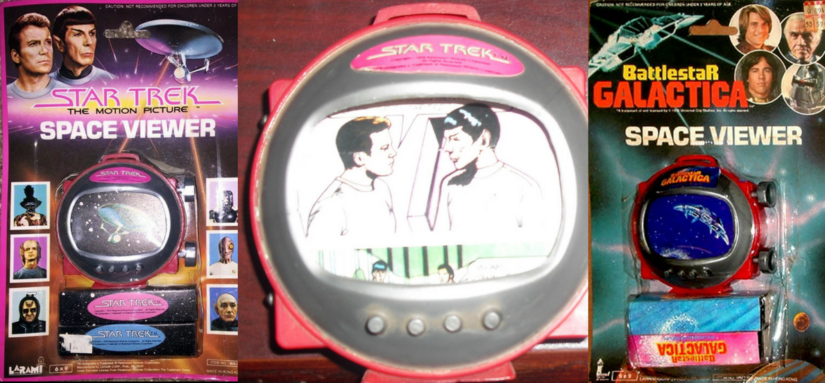

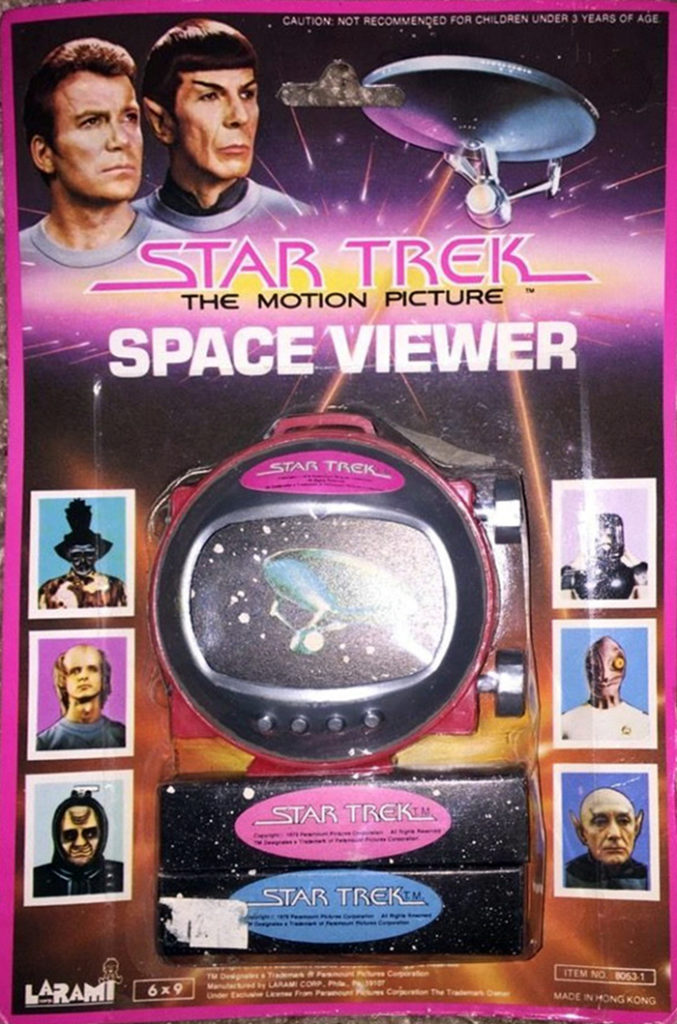
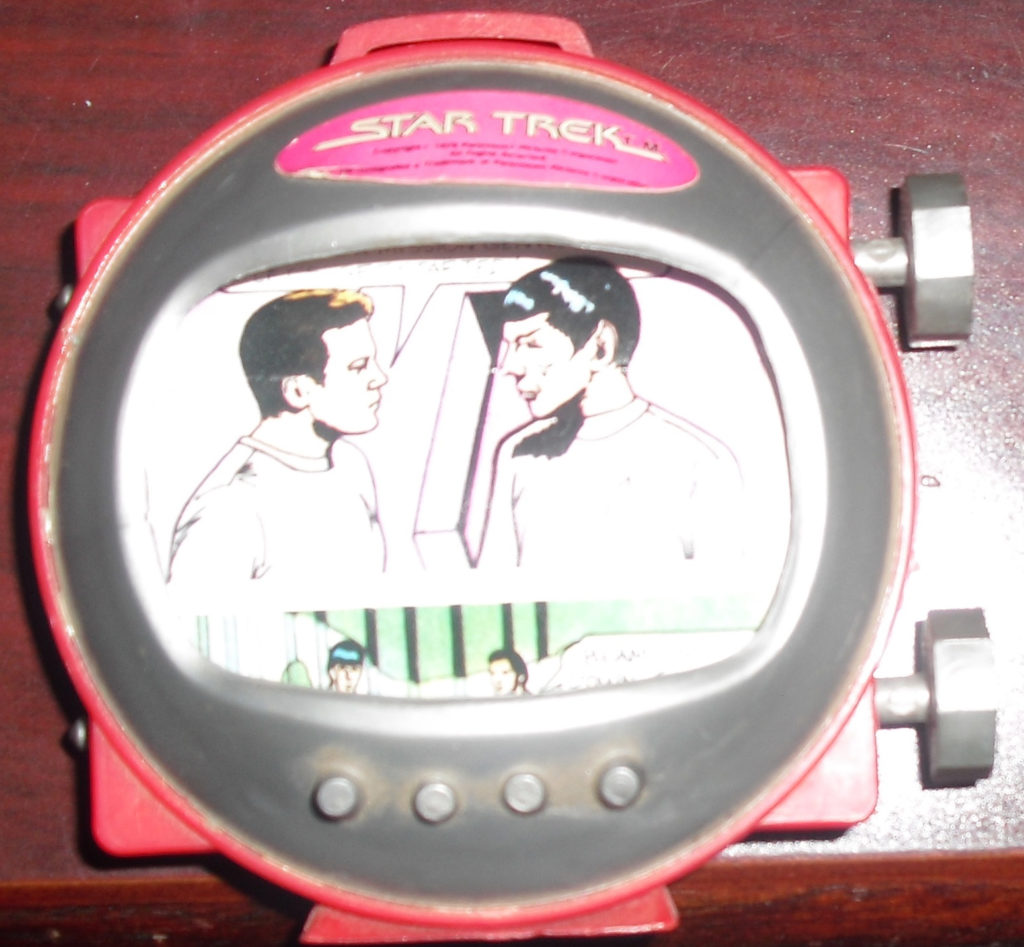
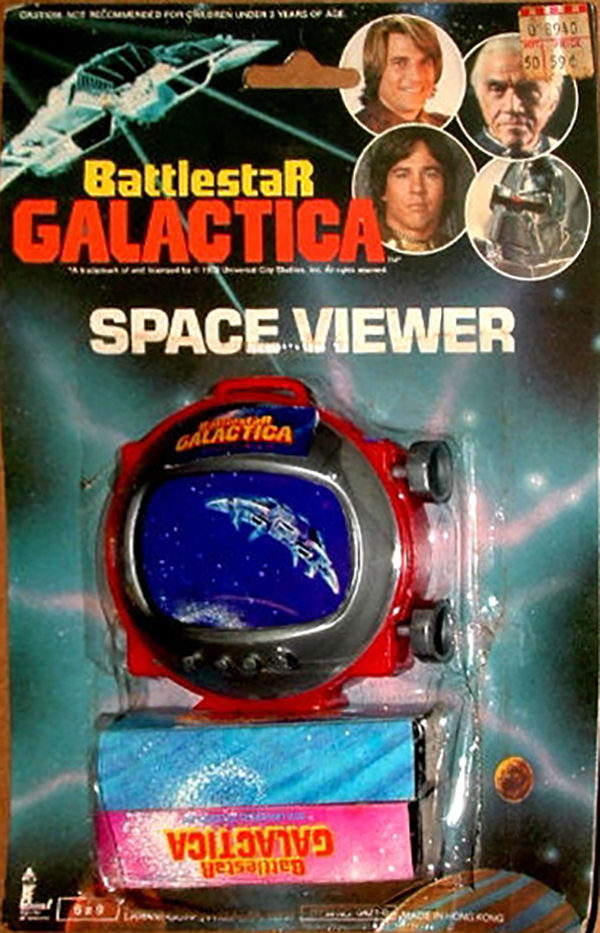
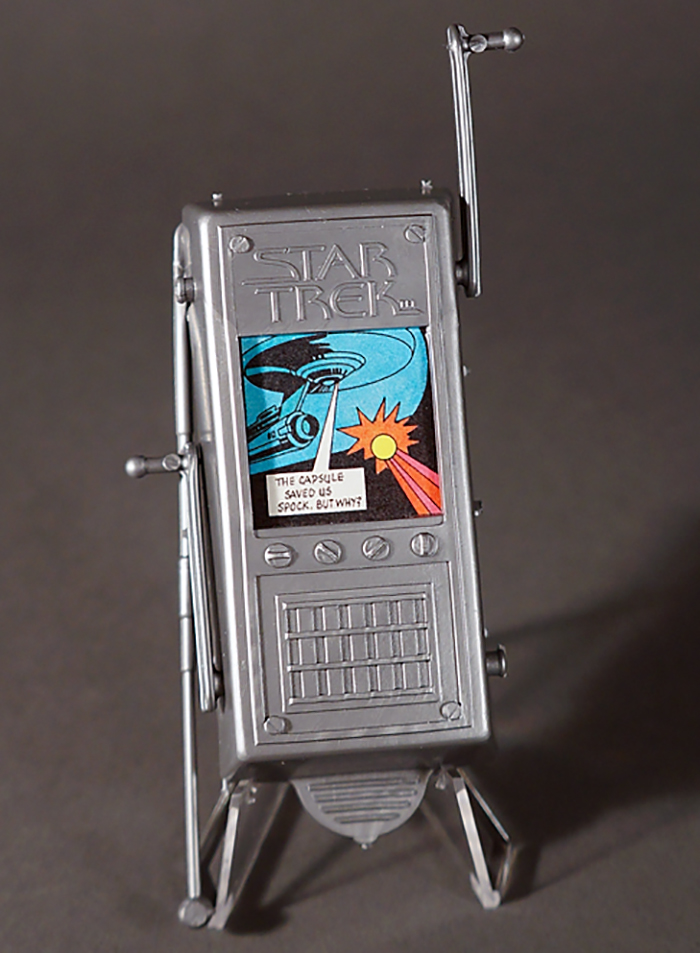


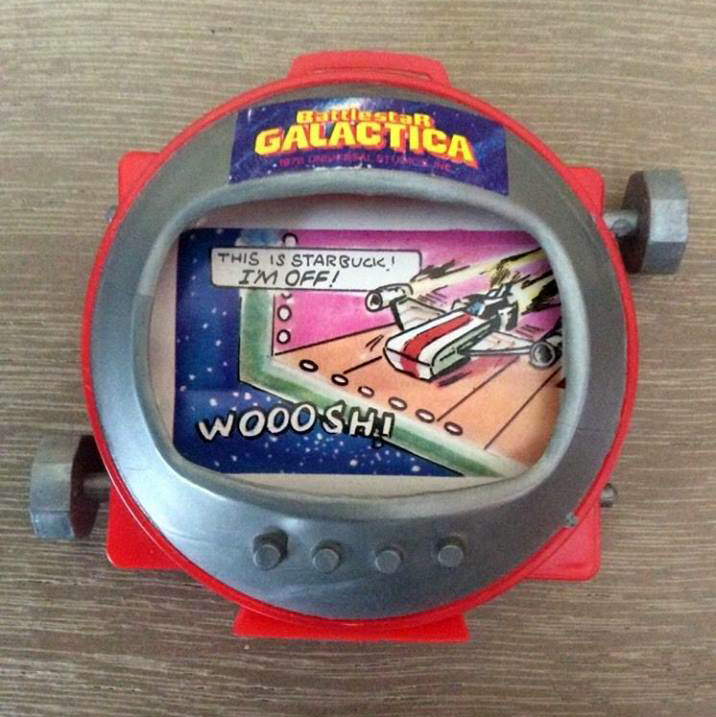
Comments are closed.